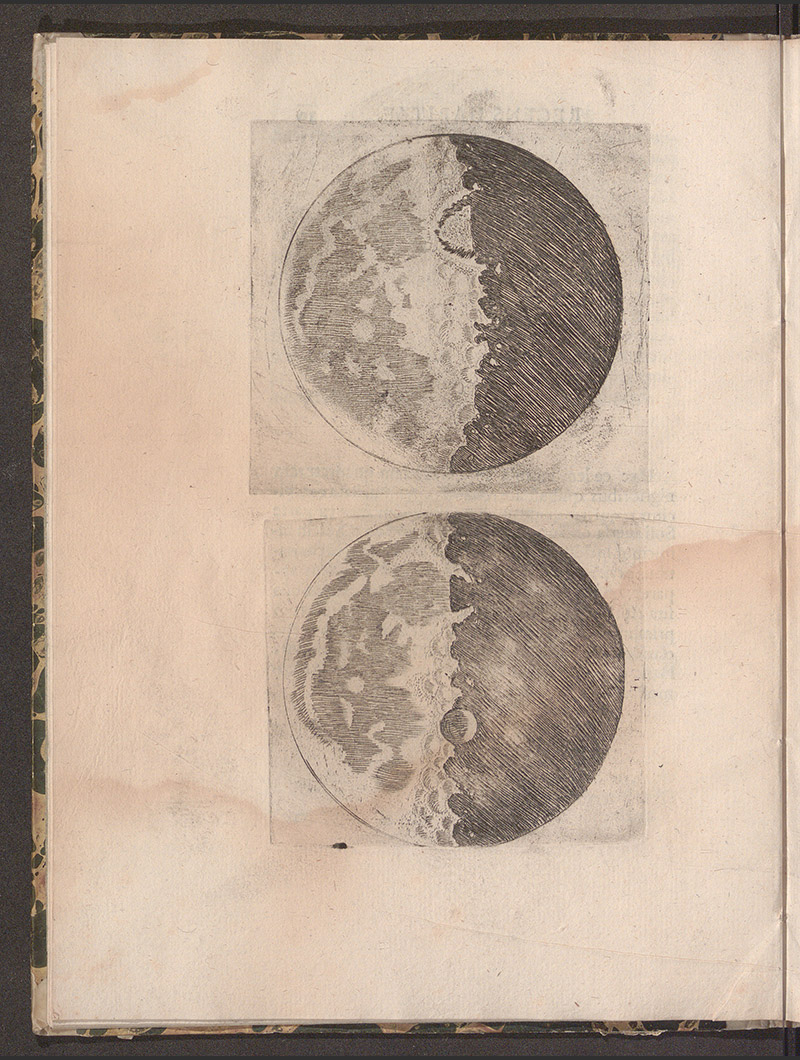Phases of the Moon

- Two copperplate engravings showing phases of the Moon.
- Galileo Galilei (1564-1642).
- Sidereus Nuncius Magna, longeque admirabilia spectacula pandens, suspiciendaque proponens unicuique, præsertim vero philosophis atque astronomis, quæ a Galileo Galileo Patritio Florentino Patavini gymnasii publico mathematico perspicilli nuper a se reperti beneficio sunt observata in Lunae facie, fixis, Lacteo Circulo, stellis nebulosis, apprime vero in quatuor planetis…Medicea Sidera nuncupandos decrevit.
- Venice: Thomas Baglionus, 1610.
These two copperplate engravings are part of a set of four engravings describing different phases of the Moon. When Galileo completed his twenty-power telescope in November 1609, the original plan was using this device for a detailed examination of the Moon. From November 30 to December 18, he described the lunar phases in at least eight drawings. The telescope revealed that the surface of the Moon was rough and irregular, contradicting Aristotle’s cosmology, which is based on the idea that the heavens, being perfect and unchanging, contains heavenly bodies that are, in turn, perfect, smooth, and spherical. However, according to the Copernican theory, an imperfect and changeable Earth had to be relocated to the sphere of the heavens, blurring the line between the heavenly and earthly realms. Thus the reader can follow Galileo’s detailed description of the movement of light and shadow over the surface of the Moon, showing craggy features that resemble the cartography of the Earth. For instance, Galileo compares the round central valley shown on the engraving at the bottom (possibly the crater Albategnius) with Bohemia, a large plain surrounded by mountains.